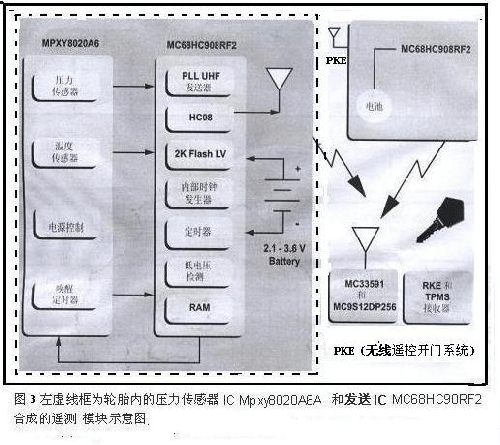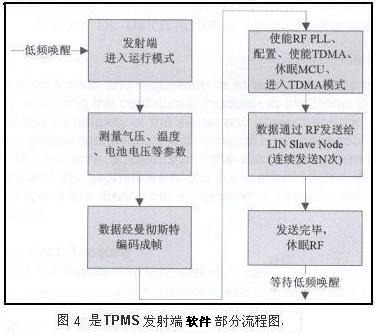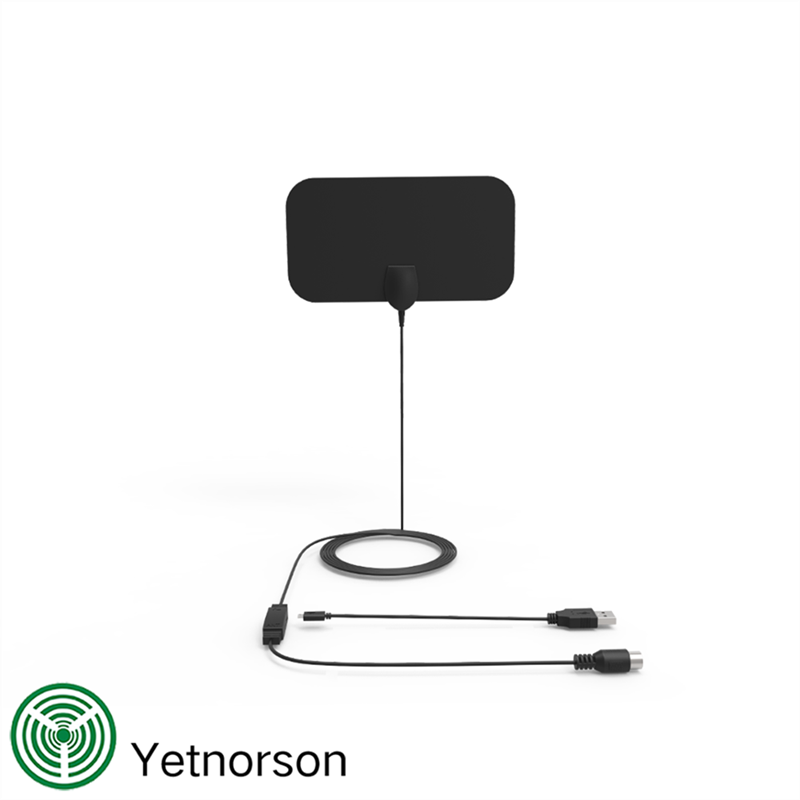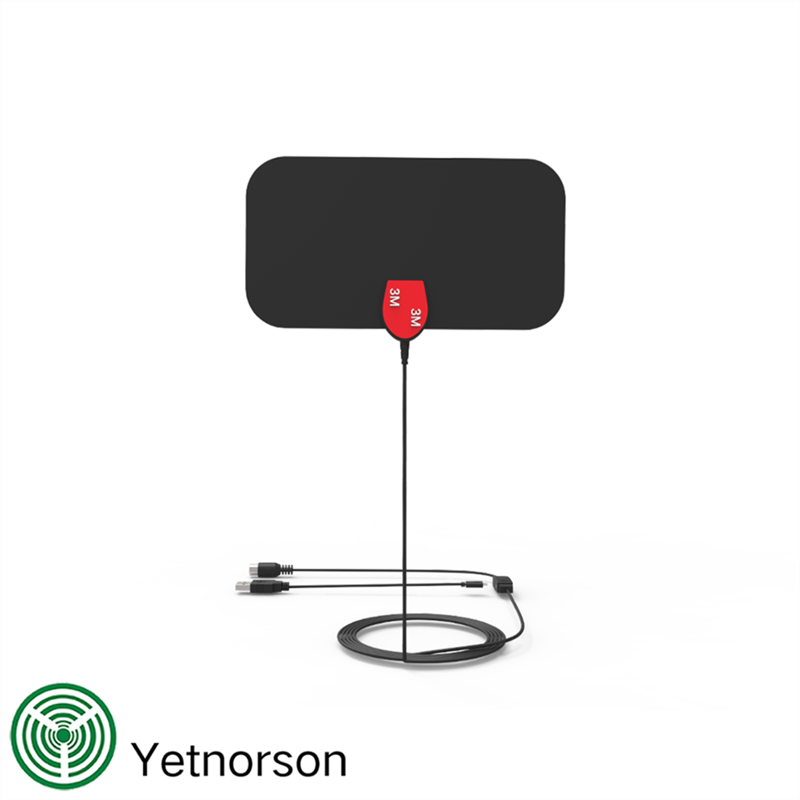1 Introduction
This article refers to the address: http://
The tire pressure monitoring system (TPMS-Tire pressure monitoring system) has a significant impact on improving the safety of automobiles. Many highway safety associations in the world have enacted legislation to enforce TPMS. Low power consumption, high reliability in harsh environments, low pressure sensor error tolerance, and longer operating life are the main requirements of TPMS, so the design of the solution and the choice of chip also revolve around this requirement. .
1.1 Currently there are three main implementations of TPMS.
Direct TPMS systems, indirect TPMS systems, and hybrid TPMSs are being introduced. However, indirect TPMS has certain limitations, and the use of indirect methods for detection relies heavily on tires and load factors. The direct TPMS directly measures the air pressure of each tire using a pressure sensor fixed in each wheel. These sensors then send the tire pressure data to the central receiver for analysis via the transmitter, and the results are transmitted to the display mounted in the vehicle. The type of display differs from the simple tire pressure indicator assembled on most vehicles today, which shows the actual air pressure of each tire and even the air pressure of the spare tire. Therefore, a direct TPMS can be connected to the display to tell the driver which tire is under-inflated. Direct TPMS can also detect small pressure drops. Some systems can even detect a pressure drop of 7 kPa to 1.0 psi. To meet multiple wheel pressure testing requirements, hybrid TPMS can overcome the limitations of conventional direct TPMS due to the installation of direct air pressure sensors. They can detect two tires in low pressure on the same axle or on the same side of the vehicle. When the four tires are in a low pressure state, the system can also detect the fault.
1.2 The next generation of new systems is the sensing and launching functions required to integrate wheel modules.
This means that the MCU, sensor and RF transmitter are all packaged together. Compared to existing products, it integrates air pressure sensor, accelerometer, temperature sensor, 8051 microprocessor with on-chip flash memory, low frequency receiver interface and 315/433/868/915MHz RF transmitter. In addition to reducing the number of components, it also reduces overall system cost because the board design is simpler and smaller. Another important design challenge comes from wireless control. The first generation of TPMS transmitters were designed using the ASK modulation technique of the SAW resonator to generate the appropriate transmit frequency. Although the ASK system is very inexpensive, it is susceptible to variations in the received field strength caused by the rotation of the wheel on which the transmitter is mounted. For this reason, today's TPMS uses a crystal oscillator-based FSK modulation method and a PLL synthesizer to generate center frequency and frequency pull.
In this paper, the scheme based on the LIN bus distributed real-time tire pressure monitoring system will be analyzed as an example, and the new chip for TPMS will be introduced.
2. Design scheme of distributed real-time tire pressure monitoring system based on LIN bus
To achieve long-term (≥10 years) service life, low-power integrated components must be used. Power management is therefore a top priority. That is to say, the main problem faced by TPMS is that it can have a long service life under limited energy. The power consumption of the entire system can be reduced by using a low-power pressure sensor, analyzing the measured data, and changing the working mode of the monitoring system and the efficient data acquisition control algorithm in combination with the actual situation of the vehicle (blackout or operation).
Since the LIN bus will be applied to TPMS, and the TPMS is realized by MCU, RF and sensor, see Fig. 1 is a schematic diagram of the direct TPMS scheme based on LIN bus. The tire pressure monitoring system indicated by the practical TPMS is composed of four types of signal transmitters, receiving antennas, receivers and signal display devices integrated with the tire valve. For this reason, it is necessary to introduce the relevant technology of the LIN bus for automotive applications.

2.1 LIN bus technology for automotive applications
The main feature of the 2.11 LIN bus LIN bus is the structure of the API to the physical layer.
LIN 1.0 (Local Interconnect Network) and LIN 2.0 bus systems for automotive applications, its goal is low-cost applications, in addition to TPMS, there are electric doors, power windows, side mirrors, wipers, seat belt alarms, external lighting Wait. The LIN bus has a maximum transfer speed of 20kbps and supports up to 16 nodes in a single-channel bus loop. The bus cable can be extended up to 40 meters in length. LIN is a single-wire serial communication based on the general-purpose SCI (UART) byte interface. The block diagram of Figure 2(a) shows the structure of the LIN bus API to the physical layer. The main features of the LIN bus are: a master node, multiple slave nodes, no bus arbitration; low cost: based on common UART/SCI interface hardware; self-synchronization, no crystal oscillator or ceramic oscillator in the slave node Clock; guarantees the delay time of signal transmission; low-cost single-wire connection; speed up to 20kbps; signal based on application interaction; LIN bus driver/receiver specification complies with IS09141 standard.

2.12LIN topology
LIN uses a single-master multi-slave mode. A LIN network consists of one host node and several slave nodes. (Because too many nodes will cause the network impedance to be too low, the total number of nodes in an L1N network should not exceed 16.) The host node includes both the host task and the slave task, and the slave node only includes the slave task, as shown in Figure 2 (b). ) is a schematic diagram of the LIN topology. The host node can also be connected via a gateway to other buses such as CAN.
2.2 System Design of Distributed Real-Time Tire Pressure Monitoring System on LIN Bus
Figure 1 depicts the overall structure of the TPMS based on the L1N bus. The central controller has three main functions: notifying the LIN slave node to wake up the transmitting module in the corresponding tire through the LIN bus; returning the data of the tire pressure received by the LIN slave node through the LIN bus. ; Analysis, display and sound and light alarms. When the LIN receives a wake-up command from the LIN master node, the node sends an LF wake-up signal to the transmitting module to put it into operation. The LIN master node sends a get command frame to the LIN slave node, and the LIN slave node feeds the data back to the LIN master node (master) through the LIN bus.
2.21 Module and chip selection for pressure sensor IC and transmission IC synthesis in tire
*The module of the pressure sensing IC and the transmitting IC in the tire
Since the pressure sensing IC and the transmitting IC integrated module in the tire are placed in the tire, the requirements on the IC are particularly high. Generally, the following requirements are required: the operating temperature is -40 ° C - 125 ° C, and the short time is 150 ° C; Power consumption to maintain battery life; can withstand 2000G (250kmh tire centrifugal force; sensor can maintain long-term stability; IC volume is small, light weight; with pressure and temperature and voltage detection. Figure 3 left dashed box is based on the tire The schematic diagram of the module of the pressure sensing IC and the transmitting IC is integrated. The pressure sensor IC is an IC integrated with pressure, temperature, voltage detecting sensor, LF, MCU, and the transmitting IC is a series of RF transmitting chips.
* Module chip selection and characteristics of pressure sensor IC and transmission IC synthesis

The left dotted line in Figure 3 shows the pressure sensor IC and the transmitting IC in the tire as the Mpxy8020A6 or Mpxy8040A chip and the MC68HC90RF2 chip of Freescale. Mpxy8020A6 contains pressure sensor, temperature sensor, power control and battery voltage detection, wake-up timer, surface micro-machined CMOS processing technology, SSOP package; and UHF transmitter + MCU (Flash) MC68HC90RF2 contains 2K users FLash ROM, timer, integrated radio frequency (RF) transmitter, low voltage detection and RAM and internal clock generator. The left dotted line of Figure 3 is a schematic diagram of the telemetry module synthesized by Mpxy8020A6A and MC68HC90RF2. The MC33591 on the right side of Figure 3 is a UHF receiver with a phase-locked loop (PLL) UHF open-key control (00K) receiver; the MC912DP256 receiver controller contains 256KFLash, 12KRAM, 4KEEPROM, up to 5CAN, 1xJl850, 256MHz The frequency of work.
Of course, the sensor IC in the tire can also choose Melexis MLX90603 chip. The MLX90603 has a 16-bit RISCMCU, 8K byte Flash, 256 byte RAM and 128 byte EEPROM. The MLX90603 also has a 125KHz or 13.56MHz LFinterface and a sensor interface for the pressure sensor in the IC. The biggest feature is that it has different working modes, Shelf mode, Sleep mode, Runmode, Idlemode and TDMA (Tag Direct Memory Access) mode for RFID and RF applications. These offer the greatest possibility to reduce the power consumption of the transmitter and extend the battery life. In terms of transmitting ICs, Melexis has different frequency and modulation IC and automotive grade ICs (operating temperature -40°C-125°C), such as 315 band, 433MHz, 868MHz and 915MHz and other ISM band bands, IC FSK, ASK and FM. The IC operates over a wide voltage range of 1.85V-5.5V and the transmit power can be adjusted from -12dBm to +10dBm.
2.22 Receive Module and Chip Selection
The MC33591 on the right side of Figure 3 is a UHF receiver with a phase-locked loop (PLL) UHF open-key control (00K) receiver; the MC912DP256 receiver controller contains 256KFLash, 12KRAM, 4KEEPROM, up to 5CAN, 1xJl850, 256MHz The frequency of work. Of course, for the central node of the receiving node in the LIN network, that is, the central controller, as shown in Figure 1. Also available is the MLX82001, a 6-bit MCU with integrated LIN2.0 and enhanced UART. The slave selectable MLX81100 integrates a dual-task CPU and LIN transceiver, specifically designed for LIN bus applications. MCU.
2.3 TPMS system software design considerations
When designing a system that is stable and efficient, the first factor to consider is software. Because wheel modules typically use microcontrollers to execute commands, an intelligent algorithm should be used to achieve the desired power. Second, the use of low frequency functions is a very effective way to control TPMS. When using the low frequency interface, the sensing module can always be in the power off mode, and the sensor will only perform measurement and data transmission after receiving the wakeup signal. In addition to reducing power consumption, the low frequency interface offers design flexibility and other advantages. For example, low frequency communication allows the system to send specific commands to the microcontroller via the low frequency interface to recalibrate and position the tire. The MLX90603 with LF (Low Frequency) interface as an example of the transmission module software design is described. MLX90603 has LF (Low Frequency) interface, so the transmitter can be in sleep mode for most of the time, wake up with low frequency signal when needed, and then measure and send the measured data to the corresponding data through TH720x transmitter chip. LIN slave node. Figure 4 is a partial flow chart of the transmitting end. In this solution, the TDMA (Tag Direct Memory Access) module integrated in the MLX90603 is fully utilized. After the data is acquired by the MLX90603, the registers required for TDMA and RF can be configured, and the MLX90603 can be put into the Sleep mode, and the TDMA module is automatically used. The transmitted data is transmitted to the RF to fully save power. Since the transmitting end works in a harsh environment, in order to ensure reliable data transmission between the transmitting end and the receiving end, considering the small amount of information and simple data, the information redundancy method is adopted to ensure reliable data reception. One frame of data is sent N times. The number of transmissions N is dynamically adjusted according to the collected data.

3. Selection of several chips in the new transmitter (remote control key) and receiver
3.1 Selection of MAX1473 Receiver and MAX7044 Transmitter
The RF receiver device MAX1473 is the latest 300MHz to 450MHz ASK RF receiver with an average sensitivity of -114dBm, which consumes only 5.5mA (typ) of normal operation. Built-in image rejection, eliminating the need for a front-end SAW filter. In sleep mode, the MAXl473 can start and transmit data in less than 250 ps, ​​ensuring deeper sleep cycles and longer battery life. The MAX1473 operates from a 3V to 5V supply voltage.
The MAX7044 device in the transmitter is a transmitter that can output +3dBmASK signal. It is packaged in a tiny 8-pin SOT package. When the duty cycle is 50%, such as Manchester code, it only consumes 7.7mA. The MAX7044 can be powered from a single lithium battery with voltages as low as 2.1V.
The RF receiver device MAX1473 is the latest 300MHz to 450MHz ASK (Amplitude Modulation Modulation) RF receiver with an average sensitivity of -114dBm, which consumes only 5.5mA (typ) of normal operation. Built-in image rejection, eliminating the need for a front-end SAW filter. In sleep mode, the MAX1473 can start and transmit data in less than 250ps, ensuring deeper sleep cycles and longer battery life. The MAX1473 operates from a 3V to 5V supply voltage. The biggest advantage of the 300MHz to 450MHz transmitter and receiver is that it can double the effective distance of your RKE system to ideal application sub-battery powered devices, including keys, car alarms and tire pressure detection.
The biggest advantage of the 300MHz to 450MHz transmitter and receiver is that it can double the effective distance of your RKE system (that is, the control range is more than twice). It is ideal for battery-powered equipment. The choice of tire pressure detection also includes the key, the car. Call the police.
3.2 Dual Channel Receiver MAX1471 Structure Block and Application for Simultaneous Capture of Two Signals
Using the MA1471 dual-channel receiver to capture both signals simultaneously, it can receive ASK and FSK (frequency conversion data) at the same time, and the switching time between modes is zero. For low-cost system designs that require both ASK and FSK decoding, the MAXl471 dual-mode receiver can also be self-pollined, allowing the device to maintain a sleep mode of up to 8 minutes and wake up the microprocessor for further energy savings. The max1471 operates from 300MHz to 450MHz and includes a built-in 42dB (megascale) image rejection mixer, eliminating the need for a common SAW filter. The MAXl471 has a built-in voltage regulator for 3.3V or 5V that operates down to 2.4V. Figure 5 shows the structure and application of the MAX1471. From the table, the MAX1471 can also be used in receivers in automotive tire pressure monitoring systems.

4 Conclusion
The above-mentioned new type of system and chip analysis introduces the use of distributed structure TPMS, which is characterized by flexible control and is more suitable for the pre-installation market. The advantage of applying the LIN bus to the TPMS is that each tire is relatively close to the receiver, thus greatly reducing the power of each transmitter and extending the life of the system.
The Description Of Flat Amplified TV Antenna
Innovative flat,razor-thin antenna design.
Flat Amplified TV Antenna It has high gain and low error rate Digital TV signal reception,and a significant signal enhancement in actual ues.Increase the reception of TV programs,and eliminate the pause the mosaic images.
Multi-directional design pulls in signals from all directions.
Fast and easy to set up - Unwrap,Plug it in and Scan channels.
IMPORTANT TIP BEFORE YOU BUY:You have to make sure your TV is Digital TV, the local signal is COVERED.You can put it on the wall,on the table or on the window(strongly recommended) and it will make you enjoy watching crystal clear digital & HD shows with many opportunities.
The Specification Of Flat Amplified TV Antenna
Features
1.Support 1080p.
2.50 miles range.
3.Multi-directional capability.
4.call out all "Free" channels.
5.Connector Type:F Male.
6.V.S.W.R.:<1.5
7.Working Frequency: 174~240MHz,470~862MHz.
8.Gain:25 dBi(with amplifier).
Picture show


Flat Amplified TV Antenna,TV Antenna With Amplifier,Digital Flat TV Antenna,Flat TV Antenna
Shenzhen Yetnorson Technology Co., Ltd. , http://www.yetnorson.com